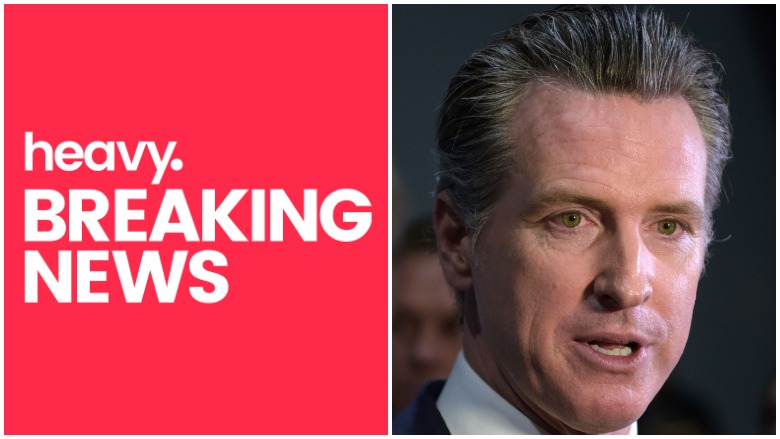
California, once well known for its beaches, mountains and proximity to Hollywood has become a symbol of how climate change is affecting major regions. From wildfires to heat waves and sea-level rise, extreme weather has become a central issue in the state.
Governor Gavin Newsom announced that, as part of his effort to halt address that issue, he has signed an executive order asking California’s regulators to incentivize car manufacturers and truck manufacturers to produce more clean-energy and zero-emissions vehicles.
In a statement, Newsom said the order was “ the most impactful step our state can take to fight climate change.”
‘Californians Shouldn’t Have to Worry If Our Cars Are Giving Our Kids Asthma,’ Newsom Says
The New York Times reported that transportation was California’s “largest source of planet-warming emissions” and caused 40% percent of the state’s greenhouse gases.
According to the executive order Newsom signed, California’s State Air Resources Board has been charged with ensuring the following:
- 100% of in-state sales of passenger cars and trucks are zero-emissions by 2035
- 100% of medium- and heavy-duty vehicles are zero emissions by 2045
- 100% of off-road vehicles and equipment “where feasible” are zero emissions by 2035
“For too many decades, we have allowed cars to pollute the air that our children and families breathe,” Newsom wrote in his statement. “Californians shouldn’t have to worry if our cars are giving our kids asthma. Our cars shouldn’t make wildfires worse – and create more days filled with smoky air. Cars shouldn’t melt glaciers or raise sea levels threatening our cherished beaches and coastlines.”
There were 655,0000 zero-emissions vehicles on the road in October in 2019, according to NPR.
One drawback to these types of declarations is the cost of “clean” cars. During an NPR program, reporter Lulu Javier Castellanos and Hannah Hagemann addressed that issue — and the fact that it primarily impacts California’s Black and Latino residents as well as its low-income residents — the most:
HAGEMANN: Yeah. That gets at the heart of the challenge. I talked to Javier Castellanos (ph). He’s a native Californian. And he commutes from Whittier, Calif., to Santa Ana – about an hour and a half each way. He drives a used Honda Civic that runs on natural gas. He bought it a couple of years ago to try and reduce his impact. But now the car doesn’t meet the state’s clean car standards. He wants to buy a newer EV. But it’s still too much for him at this point. And he feels like people like him are being left behind.
JAVIER CASTELLANOS: Latinos and people of color – we’re the guys that drive all the way from East LA to West LA. And we’re not getting any love in terms of getting support to getting these cars. So if this is really about the environment, which it’s supposed to be about, then why are you ostracizing your big majority of people that are on the road more than anyone else?
Other critics have pointed out that developing the number of electronic and other renewable-energy-fueled cars will still likely create emissions. For example, David Kruetzer, a senior economist of the fossil-fuel-leaning Institute for Energy Research, told NPR, “Electric cars might not have emissions at a tailpipe, but they do have emissions at the power plant.”
According to The Los Angeles Times, the ban wouldn’t affect cars owned before the ban.
Climate Change Has Spurred California to Lead Emission-Reduction Legislation
According to California’s Climate Change Assessment, it found that heat-related deaths would double or triple by 2050, the instance of extreme wildfires would increase by 77% by 2100, water shortages would increase 16% by 2050, water supplied by snowpacks would be reduced by 66%, and one- to two-thirds of Southern California’s beaches could disappear by 2100 due to sea-level rise.
Multiple devastating wildfires have roared across the country over the past six days — 26 according to California’s Wildfire Report. In the state’s fire summary, they reported that 3.6 million acres had been burned and 8,000 wildfires had occurred since the beginning of the year. Since August of 2015, 26 people have died since August 15 and 6,600 buildings have been affected.
With those drastic predictions in mind, California’s lawmakers have moved, often in a bipartisan fashion, to enact legislation meant to reduce carbon emissions.
As the New York Times reported, previous California Governor Jerry Brown passed a law in 2018 which promised to power 60% of the state’s electricity with renewable energy by 2030 and 100% of the state’s electricity by carbon-free sources by 2045.
This is the latest measure to deal with an issue California has tried to tackle for years, according to what political scientist Leah Stokes of the University of California-Santa Barbara told The Washington Post. “It’s a big deal. California’s largest source of emissions is the transportation sector, and the state has struggled to tackle it,” she said.
READ NEXT: New Report Shows Why California Unemployment System Needed Shutting Down
